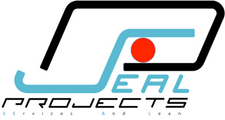Do not use canon to kill mosquito. (Ref.Confusius) - and still kill mosquito.
Proprietary Project-Program Management Methodologies
Type of organisation
Pan-European auction house second hand cars
Involved Teams
Entire organisation and abroad satellite offices
Key words
Lean in Belgium,
Project Management, coaching, Change Management, Program Management, program dashboard with visual KPI’s
Consultancy presence
2d/week
Consultant / Project Manager
Mellaerts Juan
Project Details
Yearly identified Strategic Initiatives (SI) by top management had to be translated into reality, so through projects these SI’s had to be turned into tangible deliverables, and this as efficiently as possible. No small feat, considering that the staff that had to make it happen were not all trained nor experienced in managing projects. Equally important, management needed to be informed and updated appropriately. Only the right information, at the right level of detail, at the right moments in time.
The mission: design and implement a proprietary Project Management Methodology (PMM) which meets their needs, sustainably, avoiding the pains in organisations that apply an off-the-shelf methodology which turns out to be heavy, administrative, and insufficiently modified to their respective needs, processes and organisations.
Need an Expert?
APPROACH
So, the bigger picture means we are embarking on a project (PMM) to enable the multitude of their other projects to run efficiently and to install ‘program’ management.
During monthly communications, updates on the PMM project were given.
Those employees tasked to run a project got bi-weekly coaching during the entire duration of their projects. They learned to structure their SI’s, to identify suitable approaches to different challenges, and how to tackle implementation challenges during the delivery phases. Many people ‘grew’, and several people really uncovered competencies they didn’t realise they had. In turn this even further leveraged people’s business related experience and expertise.
Senior Management got a clear, unambiguous, and correct monthly update on the SI’s progress. During these monthly SI-sessions, all relevant data per SI got raised, including any requests or clarifications from the project managers– to which the senior managers are to provide an answer. The chairman of this session projected the SI-overview on-screen, and this overview got updated in real-time, in full view (i.e. the inputs, remarks, requests, decisions from management). Avoiding hours of writing meeting minutes afterwards, checking correct interpretations, avoiding misunderstandings, etc.
RESULT
Everyone involved in these SI’s are now enabled to play their role a lot more efficient: Senior Management had a clear view on the Si’s respective progresses, and the project managers now have a ‘roadmap’ to lead their projects. The communication process between project managers and senior management – related to SI’s – runs predictably, efficiently, and in turn prevents numerous issues they used to be faced with.
Many people grew in terms of project management, and several other related competences (listening skills, identifying correct stakeholders and their respective needs, making a PBS, structure meetings, ...).
So, many more Successful projects, with a minimum of time & effort, and information based decision-making by based senior management allowed them to carefully assess which SI’s to start-up, or to put on hold, or when, which new SI can be initiated.
The PMM is respected; few to none stepping out of line because the PMM is pragmatic, simple, but effective
A methodology Fit For their respective Needs, in other words, a Key Enabler and Key success factor for any organisation to strive in a constantly changing world. A most valuable asset to put Lean’s main principle into reality, namely: Continuous Improvement.
Copyright © All Rights Reserved
Follow Us

